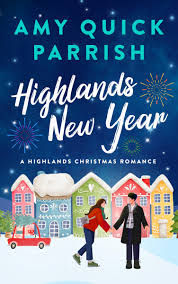Cinderella's Hearth: Harvest Festivals by Kelly Jarvis
- Fairy Tale Magazine

- Sep 15
- 4 min read

It is a story as old as time itself; a prince meets a maiden and falls head over glass slipper in love. We all love to read about fairy tale romance, but we are often so focused on the prince’s wealth and the maiden’s beauty that we forget the social context which brings the young couple together. In most variants of the fairy tale known as ATU 510A, Cinderella and her prince meet at a harvest festival, an event that is a long-standing tradition in agricultural communities around the world.
Harvest festivals are annual celebrations occurring around the time of a harvest, and they are ancient in their origins. Celtic pagans marked the wheel of the year with three harvest festivals (Lammas, Mabon, and Samhain), and in China, the place from which we collect one of the earliest variants of Cinderella, Yeh-Shen, people have long celebrated a Mid-Autumn Festival with moon cakes, dragon dances, and floating sky lanterns. Harvest fairs and festivals are featured in literary texts as well, serving as places where characters gather with their communities. In E.B. White’s novel Charlotte’s Web, it is at an autumn harvest festival that the main characters in the story, both human and animal, come of age. “They’ve got to grow up some time,” Mr. Arable, the father of the protagonist says as he watches his children run off on their own to enjoy the festivities, “and a fair is a good place to start.” Harvest festivals are not a celebration of spring’s first blooms, but a recognition of the growth we have made across the ripening seasons of our lives.

In my corner of the earth, a place once visited by the legendary Johnny Appleseed, our autumn celebration is known as The Apple Harvest Festival. My town has celebrated the Apple Harvest since the middle of the twentieth century. Residents come together on our town green and its adjacent fields in the last week of September and the first week of October to mark the ripening of the apples grown in our Connecticut valley: Gala, Honeycrisp, McIntosh, Macoun, Cortland, and my favorite, Empire. Our festival features a traveling carnival, an annual parade, fried fair food, and homemade craft booths, but it is most famous for its Apple Fritters, a delicacy of battered apples deep fried in oil and rolled in cinnamon and sugar. The secret recipe for my town’s Apple Fritters, which are only made and sold during the two weeks of the Apple Harvest Festival, is safeguarded by the Zion Lutheran Church, and the treat is so popular that customers stand in line for hours, waiting to trade their coins for a taste of our town’s enchanted confection.
Although our Apple Harvest Festival is not sponsored by a royal family like the harvest festivals of Cinderella stories, up until last year, it featured a ball complete with the crowning of a Harvest Queen, a ritual that dates back to early European harvest processions. In traditional festivals, a young woman was crowned with a wreath of wheat, fruit, and flowers as a way of expressing gratitude for earth’s plentiful harvest. I wasn’t wearing glass slippers on the night I attended the Apple Harvest Ball during my senior year of high school, and I wasn’t crowned with wheat or fruit when I was chosen to be the Apple Harvest Queen, but I did marry the man who danced the night away with me, and we are still living happily-ever-after in the home town where we were both born. We still visit the Apple Harvest Festival with our three sons each year, waiting in long lines for a paper bag filled with precious Apple Fritters, grateful that the social context of a harvest festival played a role in the fairy tale of our lives.

In contemporary times, when we can easily purchase exotic summer fruits in the dead of winter, it is easy to forget the importance of the harvest, but without a harvest ball, Cinderella might never have left the hearth and met her prince. Harvest festivals, and the fairy tales that feature them, help us to appreciate the foods, communities, and relationships that sustain us, reminding us that we are never truly alone.

Kelly Jarvis is the Contributing Writer for The Fairy Tale Magazine. Her work has also been featured in A Moon of One’s Own, Baseball Bard, Blue Heron Review, Corvid Queen, Eternal Haunted Summer, Forget Me Not Press, Mermaids Monthly, The Chamber Magazine, The Magic of Us, and the World Weaver Press Anthology Mothers of Enchantment: New Tales of Fairy Godmothers. Her first novella, Selkie Moon, comes out in 2025. You can connect with her on Facebook (Kelly Jarvis, Author) or Instagram (@kellyjarviswriter) or find her at https://kellyjarviswriter.com/
Work Cited:
White, E. B. Charlotte's Web, Harper & Brothers, 1952



